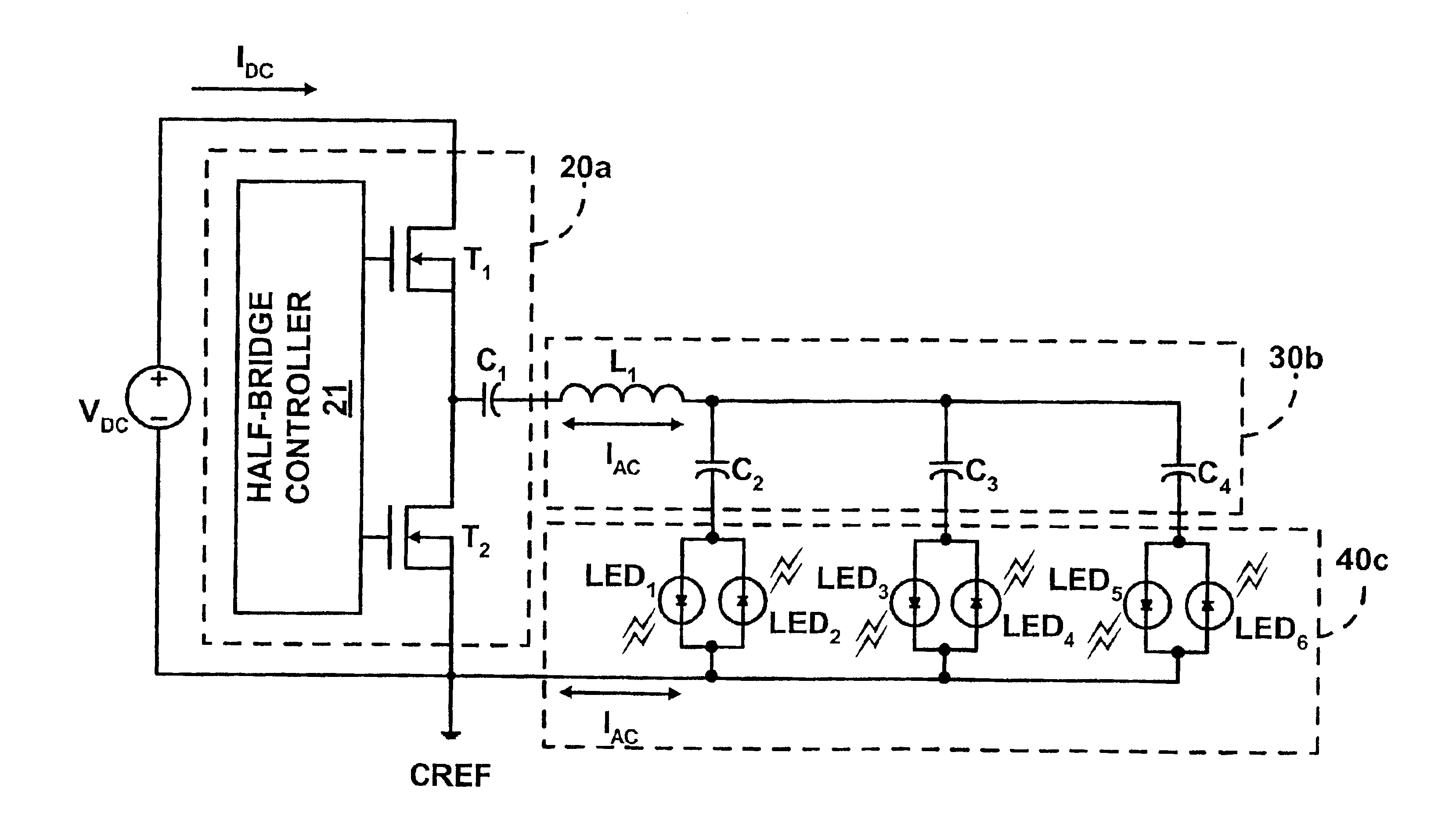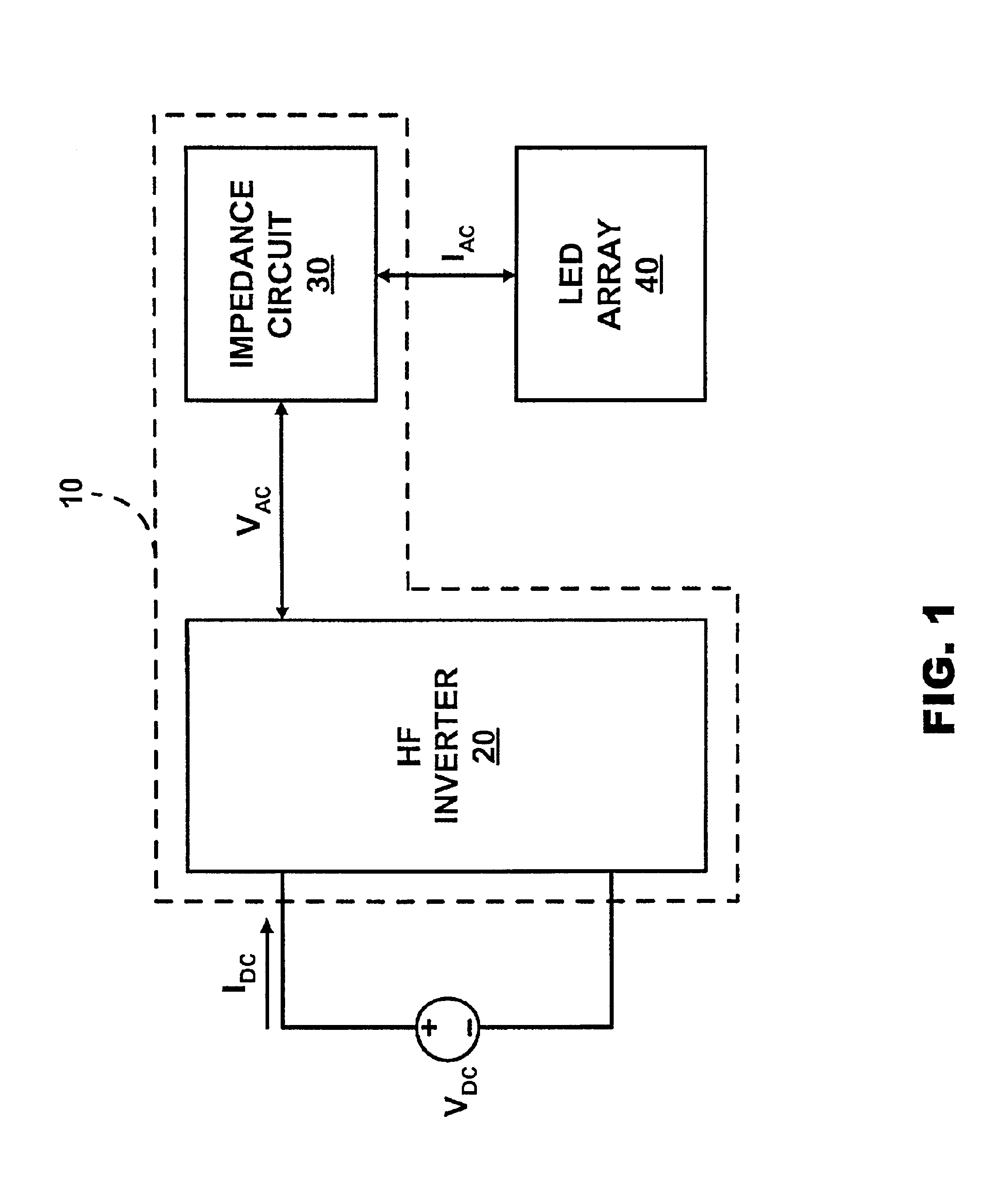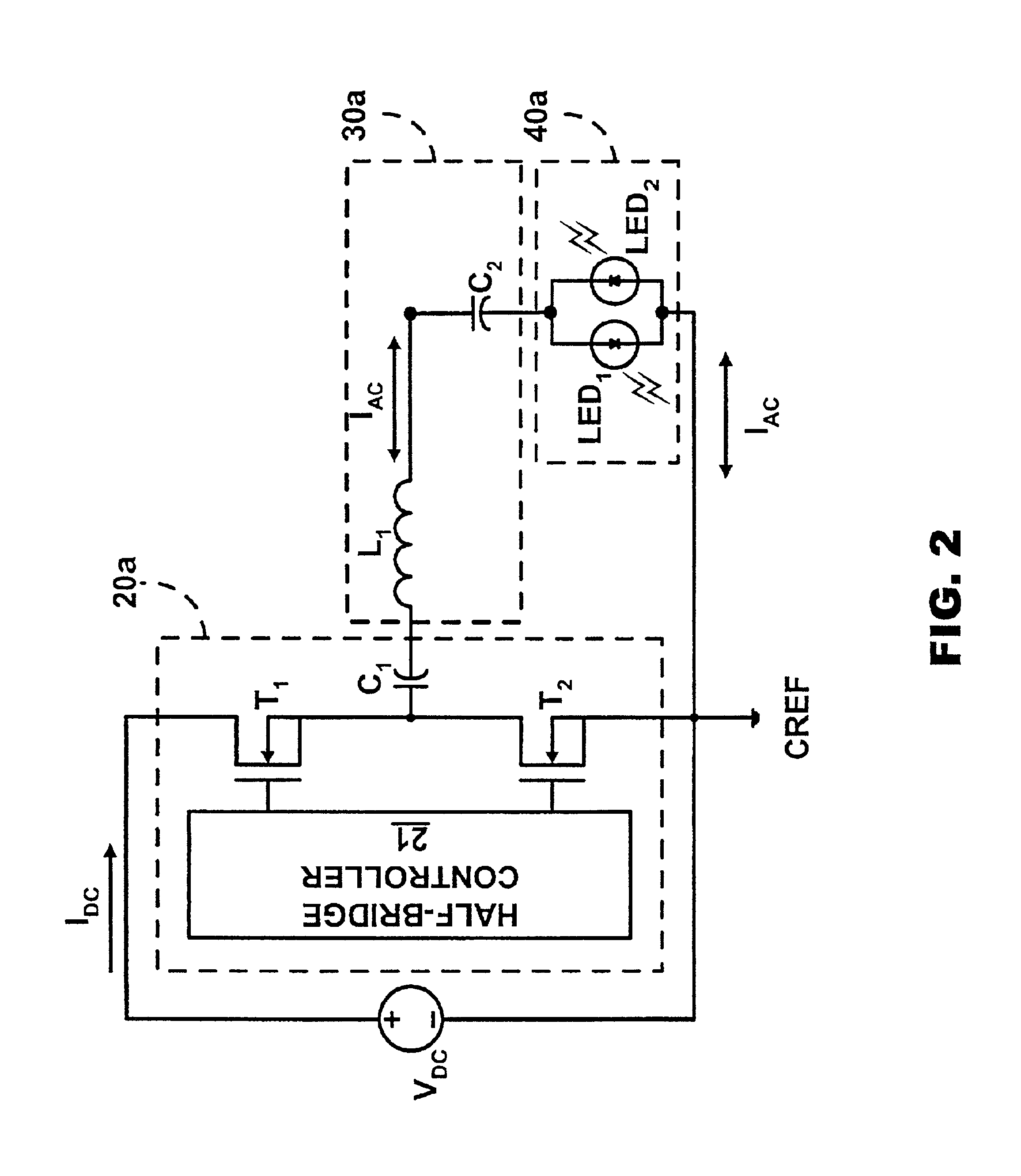Light emitting diode driver
a technology of light emitting diodes and driver devices, applied in the direction of electric variable regulation, process and machine control, instruments, etc., can solve the problems of one array operating and no provision for controlling the light outpu
- Summary
- Abstract
- Description
- Claims
- Application Information
AI Technical Summary
Benefits of technology
Problems solved by technology
Method used
Image
Examples
first embodiment
FIG. 2 illustrates LED driver 10 (FIG. 1) in accordance with the present invention. A HF inverter 20a includes a half-bridge controller 21 for controlling a half-bridge consisting of a transistor T1 and a transistor T2 in the form of MOSFETs. HF inverter 20a conventionally activates and deactivates transistor T1 and transistor T2 in an alternating inverse manner to produce a DC pulsed voltage (not shown) between transistor T1 and transistor T2. The DC pulsed voltage is dropped across a capacitor C1 to produce a voltage square wave (not shown) to an impedance circuit 30a.
An impedance circuit 30a includes an inductor L1 and a capacitor C2 coupled to capacitor C1 in series. Inductor L1 and capacitor C2 direct a flow of alternating current IAC through a LED array 40a having a light emitting diode LED1 and a light emitting diode LED2 coupled in anti-parallel (i.e., opposite polarizations). Alternating current IAC flows through light emitting diode LED1 when alternating current IAC is in...
second embodiment
FIG. 4 illustrates LED driver 10 (FIG. 1). An impedance circuit 30b includes inductor L1 coupled in series to a parallel coupling of capacitor C2, a capacitor C3 and a capacitor C4. Impedance circuit 30b directs a flow of alternating current IAC through LED array 40c. An anti-parallel coupling of light emitting diode LED1 and light emitting diode LED2 is coupled in series with capacitor C2. An anti-parallel of coupling light emitting diode LED3 and light emitting diode LED4 is coupled in series with capacitor C3. An anti-parallel coupling of light emitting diode LED5 and light emitting diode LED6 is coupled in series with capacitor C4. Divided portions of alternating current IAC flow through light emitting diode LED1, light emitting diode LED3 and light emitting diode LED5 when alternating current IAC is in a positive polarity. Divided portions of alternating current IAC flow through light emitting diode LED2, light emitting diode LED4 and light emitting diode LED6 when alternating ...
third embodiment
FIG. 5 illustrates LED driver 10 (FIG. 1). An impedance circuit 30c includes inductor L1 coupled in series to a capacitor C5, which is coupled in series to a parallel coupling of capacitor C2, capacitor C3 and capacitor C4. Impedance circuit 30c directs a flow of alternating current IAC through LED array 40d. An anti-parallel coupling of light emitting diode LED1 and light emitting diode LED2 is coupled in series with capacitor C2. An anti-parallel of coupling light emitting diode LED3 and light emitting diode LED4 is coupled in series with capacitor C3. An anti-parallel coupling of light emitting diode LED5 and light emitting diode LED6 is coupled In series with capacitor C4. A switch in the form of a transistor T3 is coupled in parallel to the anti-parallel LED couplings. Those having ordinary skill in the art will appreciate other forms of switches that may be substituted for transistor T3.
Divided portions of alternating current IAC can flow through light emitting diode LED1, lig...
PUM
| Property | Measurement | Unit |
|---|---|---|
| switching frequency | aaaaa | aaaaa |
| alternating voltage | aaaaa | aaaaa |
| resonant impedance | aaaaa | aaaaa |
Abstract
Description
Claims
Application Information
 Login to View More
Login to View More - R&D
- Intellectual Property
- Life Sciences
- Materials
- Tech Scout
- Unparalleled Data Quality
- Higher Quality Content
- 60% Fewer Hallucinations
Browse by: Latest US Patents, China's latest patents, Technical Efficacy Thesaurus, Application Domain, Technology Topic, Popular Technical Reports.
© 2025 PatSnap. All rights reserved.Legal|Privacy policy|Modern Slavery Act Transparency Statement|Sitemap|About US| Contact US: help@patsnap.com



